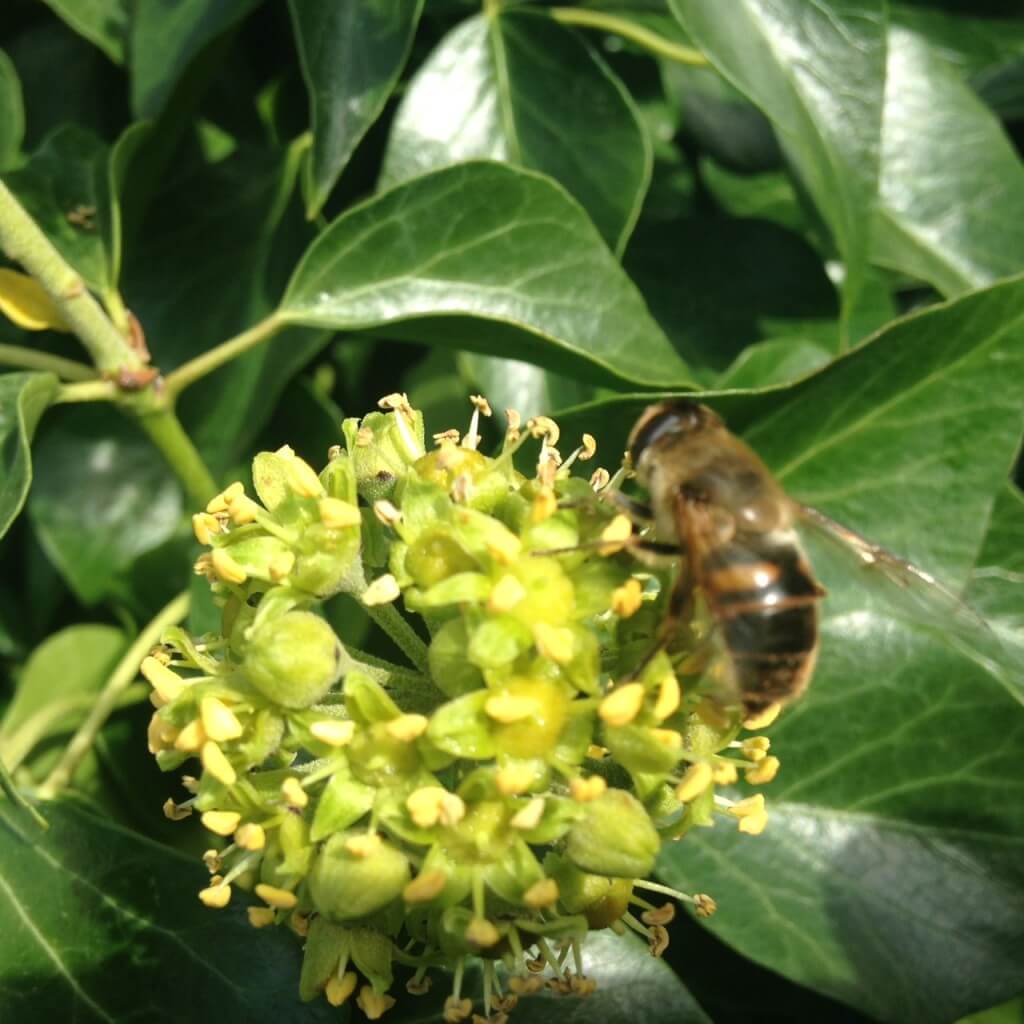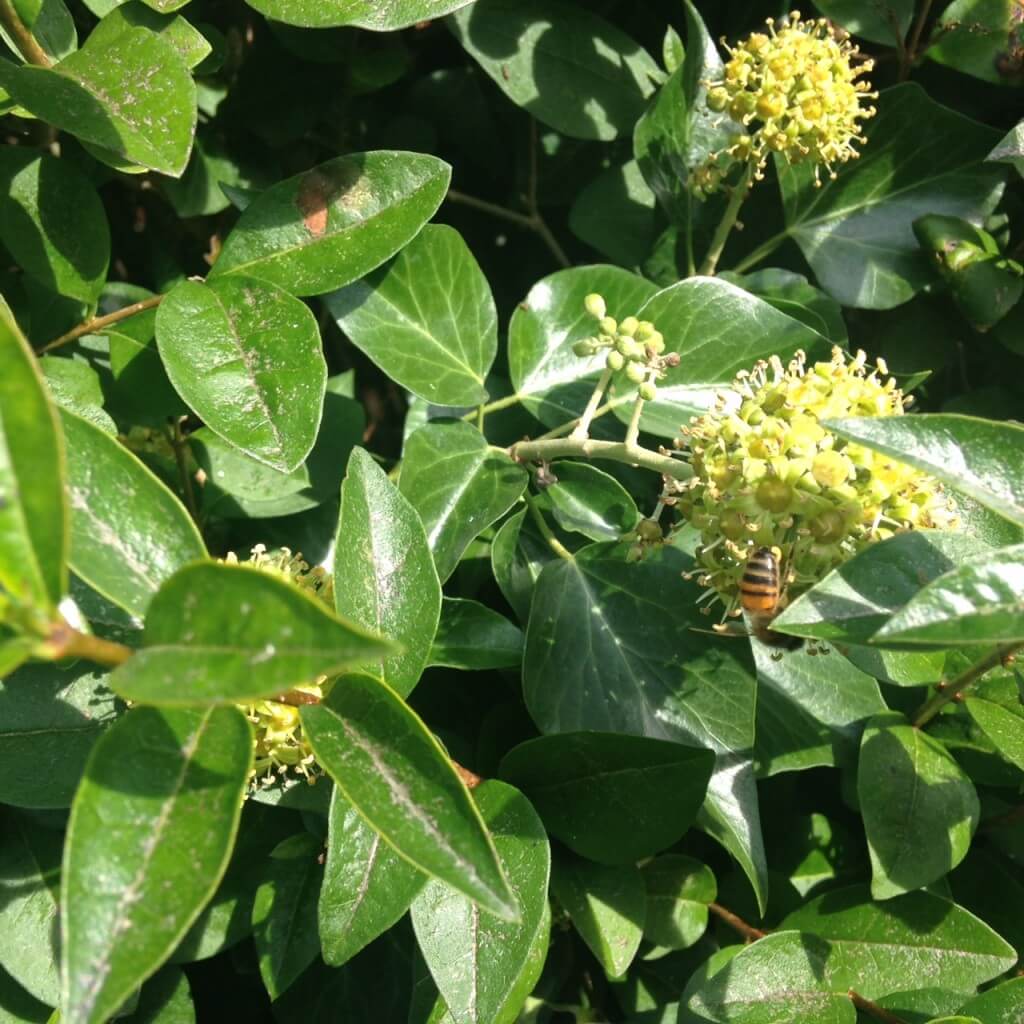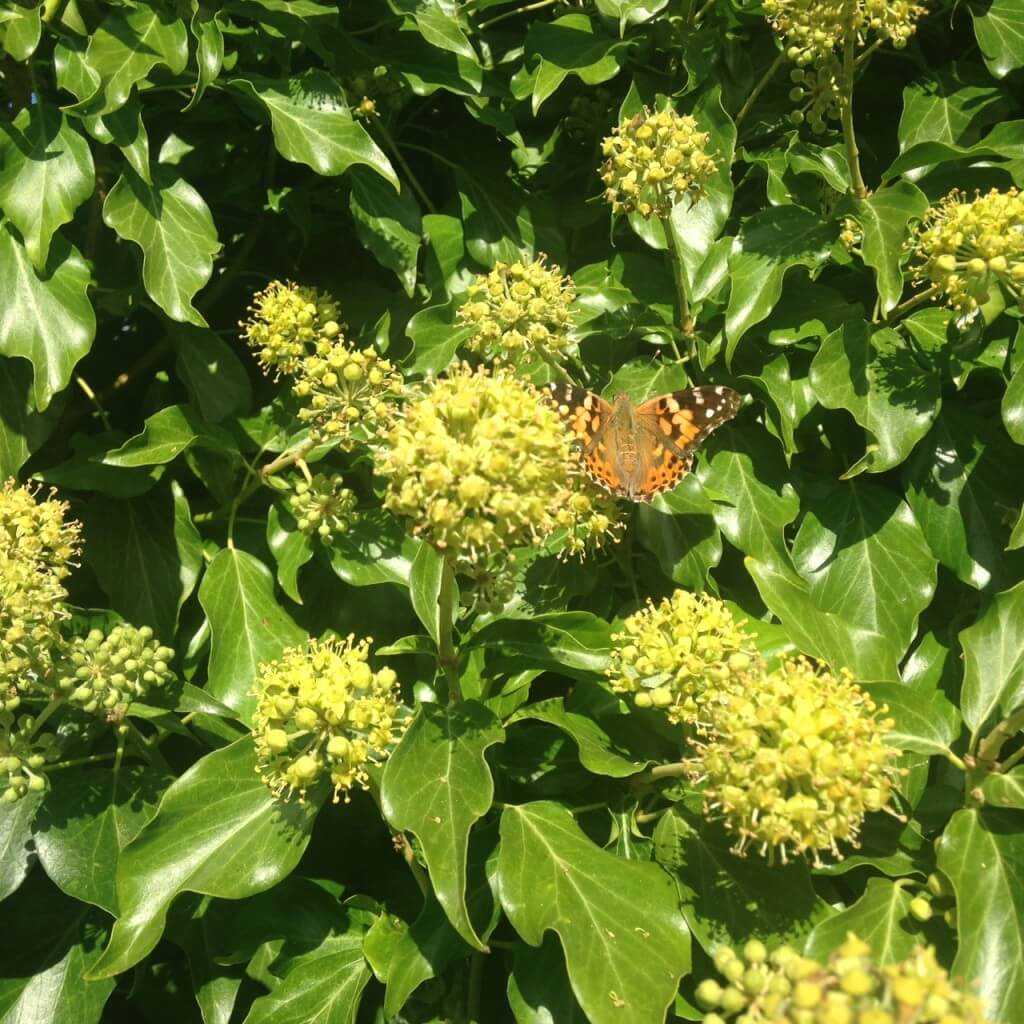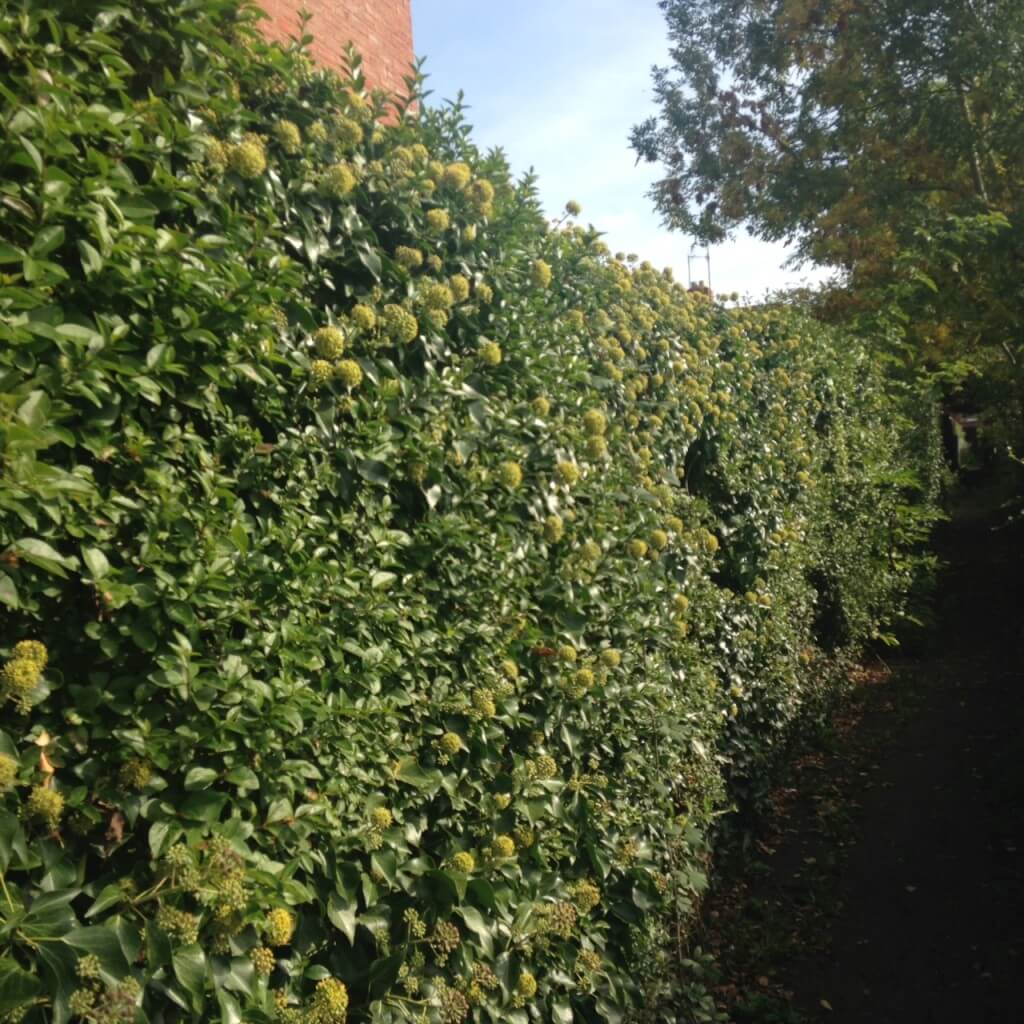I revisited the aforementioned jitty (snicket, ten-foot, twitchel, ginnel, loanen or loaney (see comments on previous blog)) on another sunny day.
The ivy flowers were buzzing with insects but this time, instead of nipping past (to catch the post) with my mouth closed and my eyes narrowed to avoid swallowing any insects, I stopped to look. First, I listened, and the place was humming with insects.
There was a Red Admiral and a Large White (I can do those) and some wasps (not sure which species), and some hoverflies, some of which looked like wasps and some looked more like bees and some looked more like flies. There were bluebottle type flies and several other dipterans too. And there were bees. Could I spot a Colletes hederae as suggested by a comment by Richard Wilson?
The more I looked the less sure I was about anything!
Was this a Honey Bee? That’s what I thought when I started, but was it?

But then what is this one?


Any helpful advice by experts, please? And in this case, you are all more expert than I!
I was relieved to find when I walked all the way home (all of 100 yards) that I could identify the Painted Lady on my own ivy…

I also noticed that on my ivy there were loads (by which I mean loads and loads – thousands) of very small yellowish-green flies which were also on the ivy flowers. They made me think of the Drosophila I had played with in biology lessons at school. Anybody have any ideas about them? Is there an Ivy Drosophila in the UK?
I could get into this invertebrate lark.
[registration_form]

The first photo shows a hoverfly Eristalis species and I suspect it is pertinax but I can’t see the front and middle tarsus which should be yellow. Also the wing stigma and face would help for identification. It does not look like Eristalis tenax, they have a thickened hind femur which resembles the pollen basket of a bee. I’m no expert, just a beginner!
Abigail – well you’re an expert compared with me – that’s for sure!
Whoops ‘Hind femur’ should be hind tibia for tenax.
Twitchel, it’s definitely twitchel
The second and third images are honey bees. The hoverfly wants you to think it is a honey bee
Chris – well it worked on me! Many thanks
Superb nectar plant Ivy – Eristalis sp and two honeybees. Perhaps Chloropidae flies maybe Tricimba sp.?
Matt – thank you. Much more difficult than birds!
Last Friday we had a gathering of chloropidae on the windows of a corner of the building where I work – must have been 5000+, hundreds on every pane. Now that was a wildlife spectacle! I didn’t know they did that.
I don’t think any of them are honey bees. Bees have four wings and flies two hence di-p-terra. That would be a good place to start.
Mark
Good on you for making the effort! Keep an eye out.
As an aside, Chloropid or frit flies are just one of many superficially similar families. Could have been a member of the Drosophilidae as you mentioned or a Heliomyzidae, Dryomyzidae or Lauxaniidae; there are other candidates too. The diversity of Diptera is astounding, 6000 spp in the UK alone. Hoverflies are worth investigating further, an active recording scheme, many species identifiable from photos (if the right bits are on view), a great field guide in the WildGuide series and a useful Facebook page run by Roger Morris.
Inverts are well worth getting in to. If not hoverflies, there are always spiders…well I would suggest that!
Happy hunting!
Richard
Mark – Can I echo Richard’s comment about getting into inverts, and strongly recommending hoverflies. With a British list at about 280, they are about as diverse as birds regularly seen in the UK, and range in difficulty from species that can be done with the naked eye, to others like the genus Cheilosia, which are the LBJs of the hoverfly world (but still easier than an Empidonax flycatcher!). There is an excellent key (Stubbs and Falk) and the Wild Guide that Richard mentions has photos of all the British genera, including pictures of tricky identification features.
Come….be one of us….
back to the jitty for ’tis the season of mists and ivy bees which have arrived in this country and are spreading north. They time their life cycle to coincide with the ivy flower. Nature is wonderful.
http://www.bwars.com/index.php?q=content/submit-sighting-colletes-hederae-ivy-bee